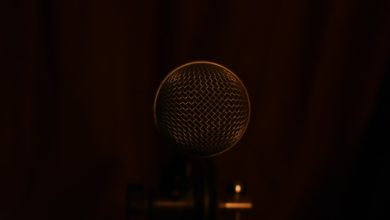The Ultimate Guide To Paint Correction Techniques And Benefits

Are you tired of seeing swirls and scratches dulling your car’s paint? Paint correction can transform a lackluster finish into a dazzling shine. We’re diving deep to show you how various techniques can erase those ugly blemishes and protect your ride’s gorgeous glow.
Get ready for gloss!
Key Takeaways
- Paint correction fixes car paint by removing scratches and swirls.
- Special tools like electric polishers, various pads, and compounds are used.
- The process makes cars look new and protects from future damage.
- Sealants keep the car safe from rain and heat after correction.
- Proper paint correction adds value to your vehicle over time.
What is Paint Correction?

Moving on from the introduction, paint correction stands out as a key step in car detailing to improve your vehicle’s appearance. It’s all about fixing imperfections like scratches and swirls on the car’s surface.
Think of it like erasing marks off a whiteboard; you’re smoothing things out for a fresh look. This method doesn’t just clean; it actually improves the clear coat that protects your car’s paint.
During paint correction, detailers use precise tools to get rid of defects without harming the rest of the paint. They start with an electric polisher to carefully work away blemishes.
A variety of polishing pads—foam, microfiber, or wool—are chosen based on what your car needs. The right buffing compound is crucial too; it helps erase those pesky marks while bringing back shine.
Afterward, professionals might apply wax or other finishes to make sure your ride looks its best and stays protected from new damage.
Techniques of Paint Correction

Paint correction restores a car’s paint to its original shine. Experts use various tools and methods to fix the paintwork on cars.
- Choose the right polishing pad: Foam pads are great for lighter work, while microfiber and wool pads tackle deeper scratches.
- Clean the surface thoroughly: Surface decontamination is key. You need to get rid of dirt, sap, and bugs before starting.
- Analyze the damage: Paint defect analysis helps you understand the scratch depth. Use your fingernail to feel for catches on the scratch.
- Pick your polish: Polishing techniques vary based on paint conditions. Some need heavy compounds, others just a fine polish.
- Work in sections: Focus on one small area at a time. This ensures each spot gets proper attention.
- Keep checking your work: After polishing each section, check if the blemishes have gone. If not, go over it again.
- Seal with protection: Once smooth and shiny, protect the paint with a sealant or wax. This locks in your hard work.
- Address swirl marks separately: Swirl mark removal might need different products or pads. They can make paint look cloudy if left unchecked.
- Remove scratches carefully: For scratch removal, be precise so you don’t wear down too much clear coat from other areas.
- Enhance overall paint quality: Paint enhancement isn’t just about fixing flaws; it’s about making sure all of the car looks even and polished.
The Benefits of Paint Correction
After mastering the various techniques of paint correction, you can expect to reap multiple rewards from your efforts. Paint correction gives your car’s exterior a new lease on life by getting rid of unsightly scratches and swirl marks.
It not only enhances the vehicle’s appearance but also helps in preventing future damage from UV rays and external elements. By applying a clear coat, you fortify the paint against wear and tear while adding an extra layer for wax or polish to bond with.
The use of sealants during the process provides long-lasting protection, guarding the surface against acidic rain, extreme heat, and other harmful conditions. This contributes to maintaining the car’s value over time.
With haze removal included in paint correction services, the true color and shine of your vehicle come through brilliantly. These corrections contribute significantly toward shielding your car’s exterior from further degradation due to environmental factors.
Conclusion
In conclusion, paint correction removes imperfections and restores the shine on a vehicle’s clear coat. With specialized tools and techniques, it effectively eliminates scratches, swirl marks, and other blemishes.
This process not only enhances the appearance but also provides long-lasting protection for the car’s paint. From removing embedded dirt to achieving an immaculate finish, paint correction offers significant benefits for automotive restoration and detailing enthusiasts alike.
Whether aiming for perfection or basic improvement, understanding the techniques of paint correction empowers car owners to achieve a flawless exterior that stands the test of time.
FAQs
1. What is paint correction?
Paint correction is a process that involves removing imperfections from the surface of automotive paint, such as swirl marks, scratches, and oxidation.
2. How often should I perform paint correction on my vehicle?
The frequency of performing paint correction depends on factors like driving conditions and how well the vehicle is maintained. As a general guideline, it’s recommended to consider it every 1-2 years for optimal results.
3. Can I do paint correction at home?
While it’s possible to perform minor paint corrections at home with the right tools and knowledge, extensive or challenging corrections are best left to professionals in a controlled environment.
4. What are the benefits of paint correction for my car?
Benefits of paint correction include restoring the gloss and shine of your vehicle’s finish, enhancing its overall appearance, protecting against further damage, and increasing its resale value.
5. Is waxing enough for correcting minor imperfections in car paint?
Waxing can temporarily mask minor imperfections but does not correct them permanently. For lasting improvement, utilizing proper products and techniques specifically aimed at addressing imperfections is essential.





